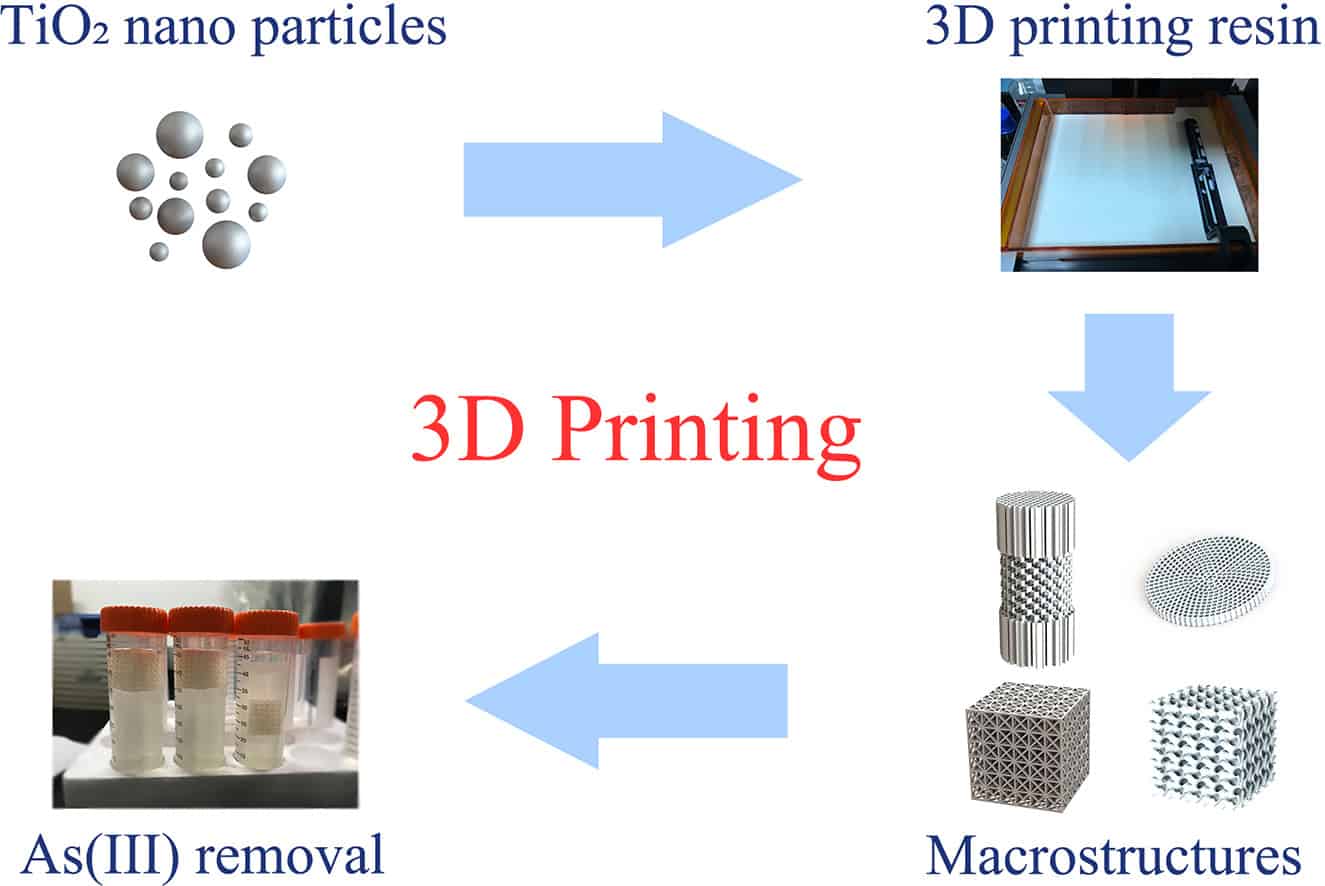-
3D printing can easily realize fabricating macrostructures with special functions.
- In this research project Nanomaterials were configured into macrostructures maintaining inherent properties.
- and 3D printed devices containing nano TiO2 were applied to remove As(III) in water.
Due to their exceptional chemical and physical properties, nanomaterials are critical in a variety of fields. Loading microscopic nanomaterials onto macrostructures is a necessary step in advancing them from laboratory studies to commercial applications.
However, the geometries of traditional supporting structures are typically limited, and nanomaterials are prone to being spread inhomogeneously, aggregated, and lost. As a result, controlling the configuration of nanomaterials into complex three-dimensional macroscopic structures without compromising their fundamental qualities continues to be a challenge.
To accomplish this, researchers leverage the advantages of 3D printing technology. The utilisation of 3D stereolithography-printed macrostructures containing TiO2 nanoparticles (TiO2 NPs) for the direct adsorption removal of As(III) in water was proven as a proof-of-concept. Then investigated the shape and distribution of TiO2 nanoparticles placed on printed macrostructures. Then, batch adsorption tests were performed to determine the effect of the 3D printing technique, the concentration of TiO2 NPs doped, the size of TiO2 NPs, as well as the adsorption kinetics and isotherms.
Additionally, researchers proved that 3D printed adsorption structures were easily reusable up to ten times and effective for raw arsenic-polluted groundwater samples.
The findings indicate that 3D printing is a potential method for designing and fabricating bespoke macrostructures endowed with unique nanomaterial characteristics.
Graphical abstract

Nanomaterials 2020, 10, 2144; doi:10.3390/nano10112144

